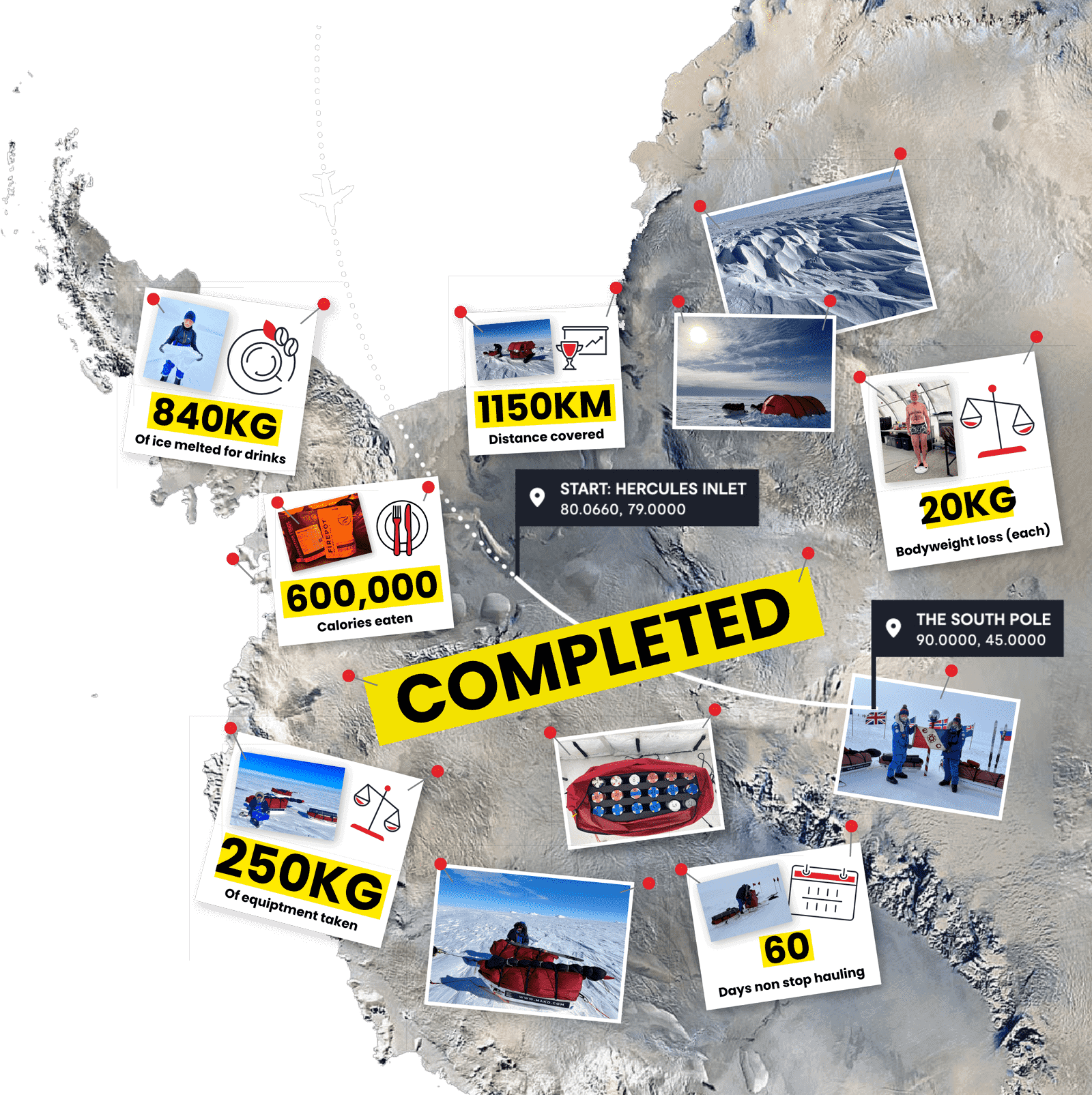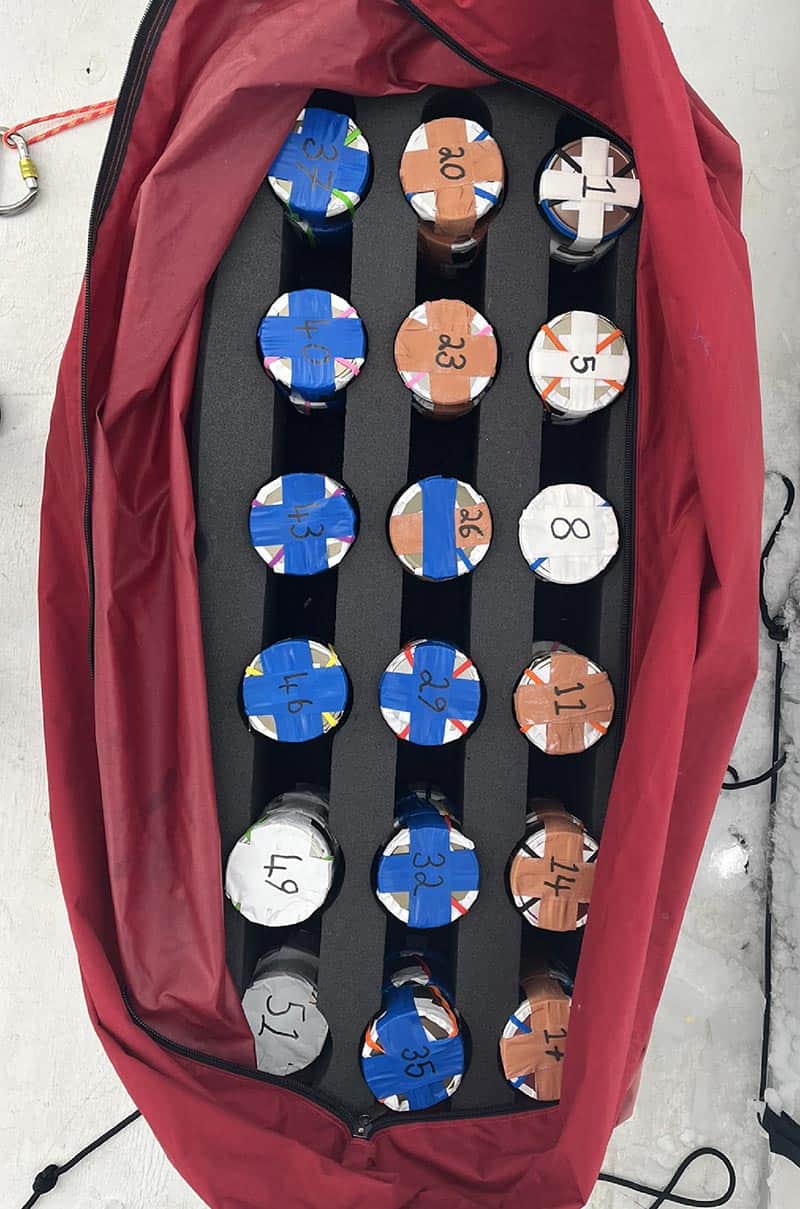Sample Collection
Internationally, the research field has struggled to find an appropriate technique to measure micro and nano plastics. LDEO at Columbia developed a sensitive Raman spectroscopic method that, for the first time, allows scientists to characterise concentrations and types of micro and nano plastics in bottled and tap water, receiving press in over 400 media channels in early 2024.
During the Antarctica expedition, three types of snow samples were collected by Alan’s team (about 470mL of surface snow), five short snow cores every 10 days and five field blank samples about 300ft upwind of their sleep sites.
A stainless-steel spoon cleaned by nearby snow at depth was used for the collection. The 475mL of snow is about 166g, and the tin container is about 66g, this the daily sample weight is 232g.
For the whole trip, the weight of samples sourced were approx 12kg.
Findings To Be Published
Sign up below to be notified when the findings of Mission Spiritus - Antarctica are available

